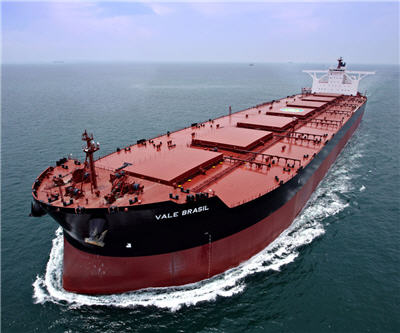
Number one iron ore producer Vale’s first of 35 mega-carriers capable of carrying 400,000 tonnes of dry bulk cargo embarked on its maiden voyage to Dalian, China in May 2011.
The 362-metre-long and 65 metre wide Valemax class which can carry more than twice as much as the next size dry bulk vessel only made it halfway there.
Then Chinese officials egged on by the country’s shipping firms and steel industry decided ban the giant vessels which cost more than $100 million a shot from the country’s ports over fears of the impact on supply and prices.
Currently 80% of the world’s iron ore is borne by so-called Capesize vessels and the Rio de Janeiro-based company has been forced to use transit centres in Africa to bring ore to its customers in China because of the ban.
In December 2011, one of the ships – rather unfortunately called the Vale Beijing – ruptured its hull and temporarily blocked a port from where Vale ships more than 130 million tonnes per annum.
The Brazilian company is aiming to have 35 of the vessels in operation by the end of the year and finally docked one of the ships in China – by far its biggest customer – earlier this month, but it was only partially loaded to comply with Chinese port regulations.
Jose Carlos Martins, Vale’s head of ferrous and strategy, told the The Wall Street Journal on Friday that the docking was “another important step,” adding that “to berth a Valemax in China will be a long march for us” and “more and more alternatives are developing to berth these marvelous vessels.”
Vale, BHP Billiton and Rio Tinto completely dominate the 1 billion tonne seaborne iron ore trade – Vale alone controls a quarter of world supply.
Considering a fleet of 35 of these carriers will have a combined cargo of 14 million tonnes that can be dumped onto the spot market in China in one go, China’s notoriously high-cost and fragmented iron ore mining industry may be forgiven for being staunchly opposed to the Valemax.
The price of iron ore retreated slightly on Friday holding steady above $130 a tonne despite persistent predictions of a sharp correction in the price of the steelmaking raw material.
The benchmark CFR import price of 62% iron ore fines at China’s Tianjin declined to $134.10, still up nearly 50% from three-year lows reached in September according to data provided by SteelIndex.